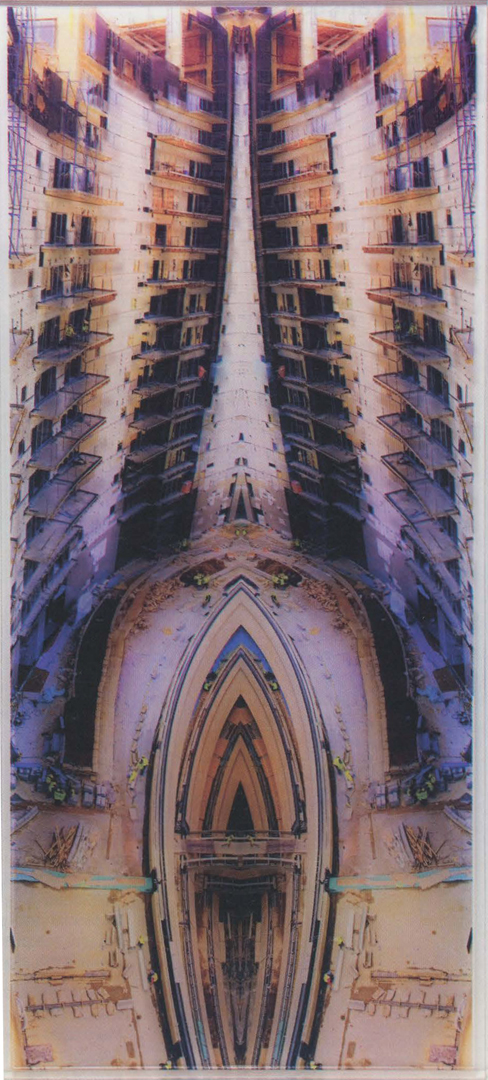Murat Germen: Kanyon reconstructed
Artist(s):
Title:
- Kanyon reconstructed
Exhibition:
Creation Year:
- 2007
Medium:
- Photograph etched on 12-millimeter plexiglass using CNC prototyping processes, inkjet
Size:
- 61 inches x 27 inches x 1/2 inch
Category:
Artist Statement:
This photo is created for a concept exhibit by eight invited photographers (including myself) for the Kanyon shopping mall in Istanbul. For the exhibit named “Under Construction,” most of the photographers worked with female models, while I personally preferred to focus on the concept of construction and reinterpret it. Construction is a temporary action that exists for a while and transforms itself into another product. This is why I wanted to end up with an architectural piece different from the one under construction. The concept text that I submitted for the exhibit was: “Went, saw, stopped, attempted to grasp and enter it, looked at construction process and workers with respect, tried to internalize, wanted to claim it for a while, dreamed of creating a microcosmos out of the macrocosmos I was in, shot and shot and shot and finally selected: the created world, though intended for all, was probably quite a personal illusion…” The construction process creates a different atmosphere, in which planes that we will later see as sterile surfaces are not yet covered, and space emerges with its total openness and sincerity. A construction site can also be seen as a podium, where a play-to-remain-incomplete is being staged. The incompleteness causes us to dream more, due to the fact that a complete building loses its narrative potential as it informs us about all the necessary pieces that constitute the whole: There is no puzzle to solve. Construction in this sense is like a historical ruin; Paul Zucker asserts that: “Ruins have held for a long time a unique position in the visual, emotional, and literary imagery of man. They have fascinated artists, poets, scholars, and sightseers alike. Devastated by time or willful destruction, incomplete as they are, they represent a combination of man-made forms and of organic nature.”
Technical Information:
Vertical panoramic photography: Took eight photos with a Canon EOS 1Ds to create a very-high-resolution vertical panorama. Stitched photos using Autostitch, retouched the final image in Photoshop CS2, mirrored the image in order to complete the aimed “reconstruction” process. Trace bitmap: Saved lower-resolution copy of photo and imported it into various software such as Freehand MX, Illustrator CS2, Adobe
Streamline. The idea was to obtain vector information for the CNC machine. The trace bitmap studies were not very successful and created a huge number of vectors that could
not be imported into CNC software. Calling a CNC specialist: After all this waste of time with vectorization, decided to consult a CNC specialist and learned that it was possible
to get 3D relief information from bitmap images. Etching the photo on plexiglass: Using CNC machine’s bundled software, constructed 3D relief patterns from the photo, and it took
about 20 continuous hours to etch the photo on a 1500 x 650 x 12 millimeter plexi sheet. Printing photo on etched plexiglass: The photo was printed on the etched side of the
plexi using a ZÜND 215 C55 UV inkjet printing system.





